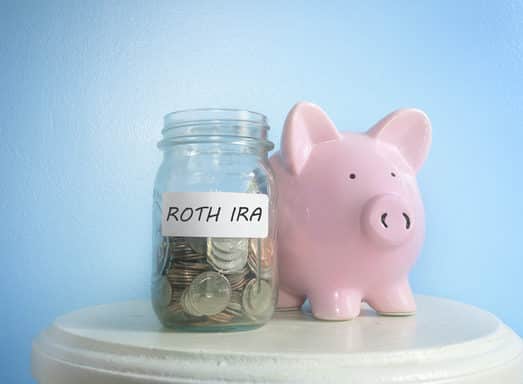Did you know that any child who has earnings from a part-time job is eligible to have a Roth IRA, even though they are not yet an adult? Establishing a Roth IRA on behalf of a child, funded either from your child’s direct savings or gifts from you, presents a unique opportunity to take advantage of the outstanding benefits of the Roth IRA savings vehicle.
Why Is a Roth IRA So Beneficial?
The main benefits of a Roth IRA are that your investments grow tax-free. You are not subject to Required Minimum Distributions, and if/when you do take distributions in retirement, they are tax-free. Hence, earnings grow tax-free and are later withdrawn tax-free. Roth IRAs also offer flexibility for withdrawals prior to retirement.
While these types of benefits likely won’t resonate with a teenager, as an adult they will come to appreciate them. In the meantime, being treated as an adult, watching their savings/investments grow, and having the flexibility to potentially use some of those assets to help fund other short and intermediate term goals should be very appealing.
Possible Gift Contributions to Roth IRA Accounts
Gifting to a Roth IRA to help match a portion or all of your child’s or grandchild’s earnings is a wonderful gift and a wonderful example. It helps teach a child the value of saving and investing, the power of compound earnings and the importance of planning. Having their own Roth IRA builds on the money management skills they are already learning from their part-time job(s).
Ideally, your child or grandchild will receive a W-2 or Form 1099 for work performed. The account will need to be opened as a custodial Roth IRA, initially established by a parent, grandparent or other adult. It will convert to an individual Roth IRA when the child reaches the age of majority (typically age 18 or 21, depending upon your state and account custodian).
Roth Funding Eligibility
To be eligible to open a custodial Roth IRA, a child must meet all the same requirements that an adult would. They must have earned income and the maximum amount of earnings that can be contributed to the Roth IRA is the lesser of $6,000 or 100% of their taxable earnings for tax year 2020. There are also income restrictions for who is eligible to contribute. For a single tax filer in 2020, you can make a full contribution to a Roth IRA if your Modified Adjusted Gross Income is under $124,000. We strongly recommend that you consult your tax preparer to determine funding eligibility.
Flexible Early Withdrawals
Roth IRAs offer the flexibility to take early withdrawals for both opportunities and emergencies. Using retirement savings should be a last resort so that you do not miss out on years of potential growth and earnings. However, if you don’t have any other options, it can be comforting to know that your Roth IRA could be available to you.
You can always withdraw any contributions to a Roth IRA tax-free and penalty-free at any time, because you have already paid taxes on that income. If you withdraw Roth IRA earnings before age 59½, a 10% penalty usually applies. Withdrawals after age 59½ are both tax-free and penalty-free, provided it has been at least five years since you first contributed to the Roth IRA.
Furthermore, there are circumstances where you can withdraw the Roth IRA earnings without penalty, and sometimes also without taxes, prior to age 59½.
Tax-free and penalty-free distribution options include:
- Up to $10,000 for a qualified first-time home purchase (this is a lifetime limit).
- Withdrawals taken because you have a permanent disability.
- Distributions made by your beneficiary or estate after you pass away.
Penalty-free, but still taxable, distribution options include:
- Withdrawals taken for qualified higher education expenses.
- Withdrawals up to $5,000 for the birth or adoption of a child, with provisions for distribution repayments.
- Qualified Reservist Distributions when called to Active Duty, with provisions for distribution repayments.
- Withdrawals used to pay for health insurance premiums while you are unemployed.
- Withdrawals used to pay for unreimbursed medical expenses that exceed 10% (as of 2020) of your Adjusted Gross Income (AGI).
Gift Tax Considerations
Any contribution that you make on a child’s behalf into their Roth IRA will count toward your annual exclusion gift limit (currently $15,000 per year, per recipient in 2020).
How to Structure Gifts
You can make an outright gift for the full contribution amount (with you fully funding the Roth IRA). Alternatively, you could replicate a more realistic employer matching contribution, where you match a child or grandchild’s contributions on a percentage basis, incentivizing the child to also save some of their own money alongside your contributions. This can teach them an important lesson about the value of matching contributions (free money!), before their first job with an employer who offers similar matching contributions to the company retirement plan.
Financial Aid Impacts
Importantly, money in a child’s Roth IRA will not affect their college financial aid eligibility, as long as they do not take any withdrawals (which might count toward a child’s income). Retirement account balances aren’t reported on the Free Application for Federal Student Aid (FASFA) regardless of whether they’re owned by the student or the parent. The College Board’s CSS Profile, an aid form that many private colleges use, does not factor retirement assets into their needs analysis either.
Teenage Years and Beyond
Finally, contributing to a child’s or grandchild’s Roth IRA isn’t just an option while they are teenagers. It is also very attractive when they are young adults whose income levels are such that they still qualify to make contributions, at a time when after-tax savings on an entry-level salary can be difficult.
SageVest Wealth Management, the parent company of SageVest Kids, frequently works with parents, grandparents and other family members to construct meaningful financial lessons and gifting structures. We firmly believe in giving you the best advice to protect your financial future while enabling stronger opportunities for the children in your life. Contact us to learn more about our wealth management services.







